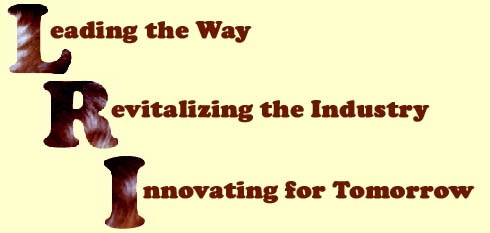 |
||||||||||||
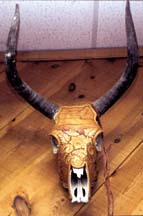 |
||||||||||||
| by: Kerri D. Howell | photos by Kerri D. Howell | |||||||||||
|
Boots, shoes, belts and clothes.
These and many more uses for leather date to prehistoric man, approximately
20,000 BC. But the Leather Research Institute at Texas Tech University
is not satisfied with a history lesson. The LRI was established in
1989 at TTU. The institute’s mission is to provide research, education
and services directed at expanding the leather tanning and finished products
industry in Texas and the United States. The LRI’s fundamental purpose
is to serve as a catalyst for industry expansion through research and
dissemination of information to build a stronger domestic market for skins
and to promote the domestic manufacturing of leather products. The LRI is funded as a line-item
institution through the TTU College of Agricultural Sciences and Natural
Resources. In addition to the CASNR funding, institute members compete
for external funding along with other faculty. In 1999, Dr. Dennis Shelly,
institute director and associate professor of chemistry at TTU, successfully
received funding from the state of Texas.
Dr. Terry Ervin, an agricultural
economist in the department of agricultural and applied economics, is
currently the associate director of the LRI. When Ervin began his work
at the institute, he was given a goal: How can the industry produce the
highest quality hides possible? Since then, Ervin and his colleagues
at the LRI have researched several issues effecting the leather industry.
One such issue is the economic feasibility of using an alternative cattle
identification system to decrease hide damage. Research involved cattle
in Texas and New Mexico. One of the most common and
most hide-damaging forms of cattle identification is branding. According
to the institute’s research, a premium of $1.72 per hundredweight
is paid for cattle with non-branded hides. However, many states, banks
and other lending institutions require cattle to be branded to prevent
theft. To satisfy the identification requirements, the cattle producer
and the industry’s need for quality hides, LRI researchers are working
to make the use of a combination ID system of ear tags and microchips
placed under the hide economically feasible. The research in this area found
the premium paid for cattle with native hides should be sufficient enough
to motivate some producers to adopt alternative identification practices.
With the advancements in technology and the support of producers, the
possibility for higher hide quality is in the near future.
Research at the LRI ranges
from issues of hide quality to futurist focuses of chemical warfare. With
the hides being the number one by-product, the LRI is always looking for
the continuing uses of hides. The institute will not only
benefit the leather industry, but TTU as well. "The industry and the
public will see that Texas Tech is doing research about something that
is dear to them," Ervin said. The LRI is working to develop
grant proposals which, if accepted and awarded, lead to greater recognition
for the institute and the university. Along with the industrial and academic
benefits, the LRI is advantageous to the city of Lubbock. The institute
has proposed to help establish a leather product testing facility and
a crust leather plant, or tanning facility, as part of Lubbock’s
economic development strategy.
Though the testing and tanning
facilities are still in the planning stages, without additional funding
these plans will not materialize. Leather use is dated by Biblical scholars as early as the third chapter of Genesis, and ancient Arabs were prolific in their leather-working skills. But the LRI and TTU are writing a new page in history… or is it a page in the future? |
||||||||||||
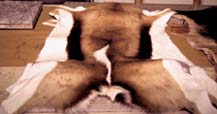 The
LRI was originally housed in the College of Human Sciences but was moved
to the College of Arts and Sciences in 1998. The institute works with
researchers in various academic departments at TTU to gain insight into
the industry.
The
LRI was originally housed in the College of Human Sciences but was moved
to the College of Arts and Sciences in 1998. The institute works with
researchers in various academic departments at TTU to gain insight into
the industry. 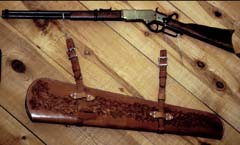 "It’s
not just about the cows anymore," Ervin said. "Once we produce
the best hides, the challenge isn’t over."
"It’s
not just about the cows anymore," Ervin said. "Once we produce
the best hides, the challenge isn’t over."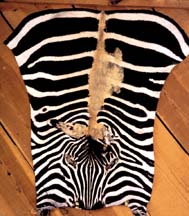 Crusted
leather is an intermediate tanned product that has been fat liquored.
According to Ervin, this is the stage between the wet blue and finished
leather stages. At the crusted leather stage, the ultimate use of the
leather has not been determined. The next stage is to determine the final
use of the material and apply the appropriate tannage to produce the desired
result.
Crusted
leather is an intermediate tanned product that has been fat liquored.
According to Ervin, this is the stage between the wet blue and finished
leather stages. At the crusted leather stage, the ultimate use of the
leather has not been determined. The next stage is to determine the final
use of the material and apply the appropriate tannage to produce the desired
result.